#june 1919
Photo

1919 Helen Dryden, Vogue Magazine Cover, June 1919.
#1919#illustration#helen dryden#cover#vogue#vogue cover#june 1919#1919 illustration#dryden#lady wearing a big hat#big hats#hats#red hats#red#summer issue#summer fashion#june#summer
14 notes
·
View notes
Text

#okay folks back to scheduled posting!#June 30#june#1919#franz kafka#daily kafka#franz kafka diaries#quotes#alt text
160 notes
·
View notes
Text
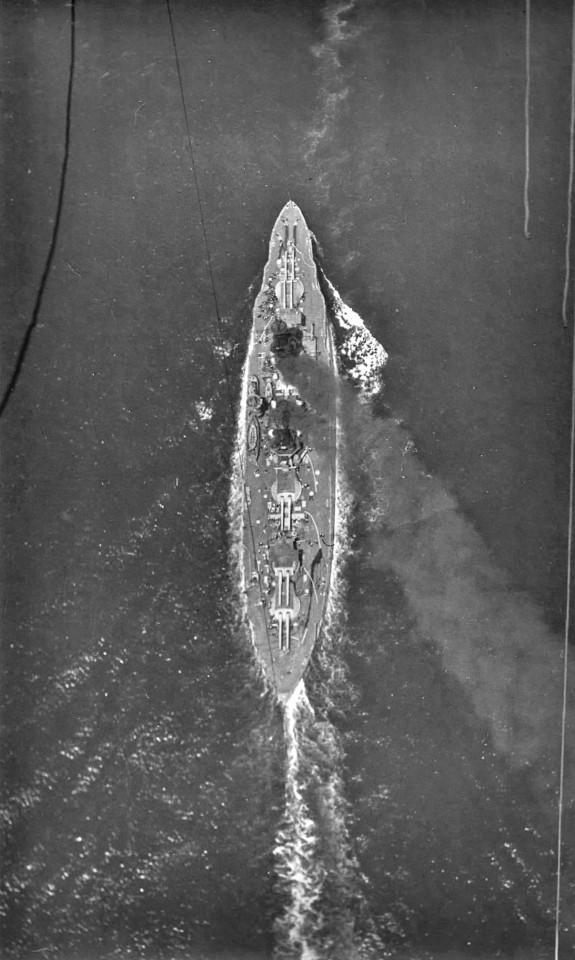
"How USS Texas (BB-35) appears to an airman when the 'risibility' is good. Sometime between June 1 and July 15 a great demonstration of what aiteraft can do in naval warfare is to be made off the Virginia Capes. On that occasion Uncle Sam's birdmen hope to be able to produce results that will startle the world. Daily the members of the Naral Air Service are practicing with dummy bombs on both fixed and towed targets; and the statement recently attributed to Gen. William Mitchell, second in command of the Army Air Service, that there is no American naval air service worthy of the name, may soon be refuted. Of unusual interest in this connection are the articles in this issue of LESLIE's, by Theodore Roosevelt, Jr., Assistant Secretary of the Nary, and Captain L M. Overstreet, of the United States Nary."
"Official USN photograph from the Minnesota Aviation Hall of Fame archives." link
#USS Texas (BB-35)#USS Texas#Battleship Texas#new york class#dreadnought#battleship#June#July#1919#interwar period#united states navy#navy#us navy#usn#u.s. navy#kite balloon#my post
73 notes
·
View notes
Text

Maurice Goldberg ~ Olive Thomas (A camera study). Theatre Magazine vol. 29, Jan–June 1919 | src internet archive
View on WordPress
#Maurice Goldberg#Olive Thomas#pictorialism#pictorial portrait#shroud#portrait#theatre magazine#ziegfeld girl#pictorialisme#pictorialismo#Piktorialismus#pictorialist portrait#1910s#Porträt#retrato#ritratto#portret#circle#retrat#Bildnis
497 notes
·
View notes
Photo
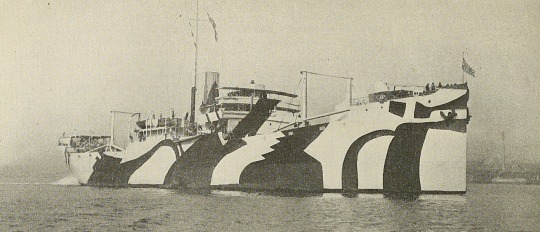




Varieties of ship camouflage from International marine engineering v.24 (1919:Jan.-June).
Full text available here
3K notes
·
View notes
Text
Fellow Travelers Timeline
(as comprehensive as i can make it. corrections/additions welcome)
1919-20 (?) - Hawk is born
based on tennis trophy which shows year 1936, and hawk's statement that he and kenny were on the tennis team in 11th grade (16/17 years old).

also date on the paperweight (1937) that hawk says kenny picked out on their senior trip. spring or fall though? if spring (usual for a senior trip, just before graduation), it would mean hawk graduated HS in 1937, b. 1919. (thanks, @lestatscunt!)

June 6, 1930 - Tim is born, on Staten Island, NY
birthdate/place shown on army application in ep 5
Gemini, with moon in Libra
>>> With a Gemini Sun Libra Moon, emotional equilibrium is hard for you to maintain in a world of constant flux and tension. Since you are not responsible for the woes and upsets of those around you, you should not feel so duty-bound to assuage their wounds or mediate every conflict that happens to come your way.
>>> your natural diplomacy, extraordinary perception and insight can all be applied creatively in such fields as politics, social work, and the mass media.
>>> your extreme open-mindedness would probably enable you to almost any life-style. You have a universal quality about you that transcends culture, religion, ideology, or any other barrier that divides mankind.
Fall 1937 - Spring 1941 - Hawk attends "Penn", presumably the University of Pennsylvania. (assuming hawk b. 1919)
(this is very very long, the rest is under the cut)
December 7, 1941 - bombing of Pearl Harbor, US enters WWII
??? - Hawk joins the army (along with Kenny), and is sent to Europe.
January 9 – August 15, 1945 - Battle of Luzon, where Kenny dies.
September 2, 1945 - Japan surrenders, US exits WWII
February, 1949 - Hawk starts working at the State Department
Hawk says in 1x04 (Dec 1953) that he's been working at the State Dept for "four years and ten months".
"I came out of the war with four assets: degree from Penn, a hero's war record, no particular political ideology, and a passing acquaintance with three languages. Throw in a talent for prevaricating and a taste for travel and fine clothes, you have the makings of a competent, mid-level Foreign Service bureaucrat."
Fall 1948 - Spring 1952 - Tim attends Fordham University, graduating with a degree in political science and history.
1951 - Hawk starts work for the Bureau of Congressional Relations
Tim mentions Hawk's been working there for two years during their meeting on the bench.
1952 - Tim works "the New York campaign" (presumably for Eisenhower).
1952/3? - Tim interns for three months at the Star, in the mailroom.
November 4, 1952 - Election Night, Eisenhower (R) wins the presidency. Tim/Hawk first meet and are instantly smitten. (ep 1)
February 16, 1953 to March 10, 1954 - McCarthy Hearings, part 1.
The first consisted of a series of hearings conducted by McCarthy, as the subcommittee’s chairman, throughout 1953 and early 1954 in which McCarthy alleged Communist influence within the press and the federal government, including the State Department, the U.S. Army, and the Government Printing Office.
March 5, 1953 - Stalin dies.
Late March, 1953 - Hawk/Tim second meeting
After Hawk meets Tim at the park bench, he attends a hearing where Marcus says Cohn has brought David Schine on, and then later at their lunch Senator Smith says, "McCarthy is sending Cohn and his sidekick to Europe..." This article, dated April 19, says that Cohn and Schine have been in Europe for two weeks.
Hawk mentions that it's near the end of the month, police need to make their quotas.

April 27, 1953 - Executive Order 10450 signed. Hawk goes to Tim's apartment and tells him about Kenny. (ep 1)
June 6, 1953 - Tim's 23rd birthday (Hawk 'misses' it because they weren't talking for 4 weeks. belated celebration in ep 3.)
June 15, 1953 (?) - date of the newspaper Tim is reading just before he goes to visit Hawk in ep 2, where Hawk makes him write the letter to Mary. I'm choosing to believe this is a mistake on the show's part, because this would mean that Hawk has already missed Tim's birthday.

June 19, 1953 - Julius and Ethel Rosenberg's execution. Hawk comforts Lucy about this at the end of ep 2. So, likely Hawk and Tim had their big fight very shortly before Tim's birthday, and weren't talking from end of May - end of June.
End of June, 1953 - at the end of ep 2, Tim says it's been 4 months since his last confession, making his last (proper) confession the end of Feb or beginning of March. (ie, before he meets Hawk again).
End of June or beginning of July, 1953 - weekend trip to Rehoboth Beach (ep 3)
November 1953 - G. David Schine drafted into the army (ep 3)
Christmas 1953 (ep 4)
March 16 to June 17, 1954 - Army-McCarthy Hearings (part 2) (ep 5)
The second phase involved the subcommittee's investigation of McCarthy’s attacks on the U.S. Army. Known as the “Army-McCarthy hearings,” they were broadcast on national television and they contributed to McCarthy’s declining national popularity. Five months later, on December 2, 1954, the Senate censured McCarthy.
June 6, 1954 - Tim's 24th birthday
June, 1954? - Tim/Hawk break up, Hawk proposes to Lucy (ep 5)
I believe this happens at the tail-end of the Army-McCarthy hearings, so before June 17th.
Fall, 1954 - Sen. Smith's funeral
based solely on fall foliage in this screenshot:
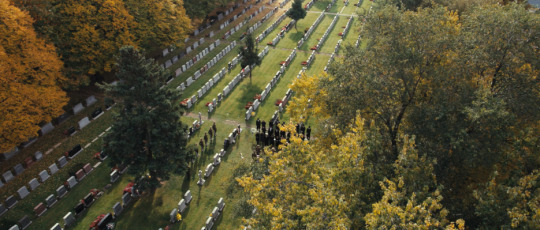
Late Nov / Early Dec, 1954 - Tim enlists in the army
based on army application: birthdate 6/6/30, age: 24 years, 6 months
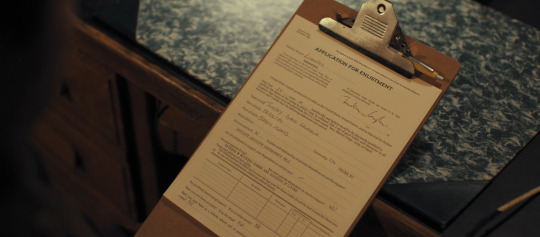
Late Nov / Early Dec, 1954 - Hawk/Tim last meeting in the tower
based on the radio program Tim is listening to, which says, "Chief Counsel Roy Cohn has resigned from the committee. And Senator McCarthy, his approval ratings plummeting, faces censure or even expulsion from the Senate."
Tim leaves for Fort Dix, for training, but is later stationed at Fort Polk, in Vernon Parish, LA. (thanks, @jesterlesbian!)

December 2, 1954 - the Senate censures McCarthy.
Summer or Fall 1956? - Tim's letter (that lucy burns) (ep 6)
Flashbacks, for context:
"Since he's giving up his apartment, Hawk insists on having a lair in the woods." // "I'm surprised that he finally agreed."
Lucy lets contractor go. // "Give me a baby."
Hawk is reading the Bristol Daily Courier, a paper located in Bristol, PA, a town in Bucks County, outside Philadelphia. I can't find any info on the one headline I can read though ("Heath Carlson breaks arws deadlock, locals proud"), so can't date this properly.
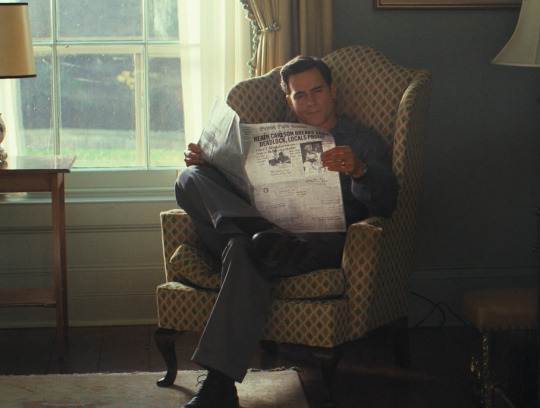
Lucy cleaning out Hawk's apartment, finds paperweight, sees Tim drop off letter.
"I went into the Army to get away from you. I thought time and distance would help. But it hasn't." If Tim sends the letter in summer 1956, it's been a year and a half since he enlisted.
Biggest question here: did lucy ask for a baby before or after she read Tim's letter??? the flashbacks don't answer this definitively.
October, 1956? - Lucy becomes pregnant with Jackson (see note under April 1957)
October 23 – November 4, 1956 - Hungarian Revolution of 1956
October 23, 1956 - April 30, 1957 - Hungarian Refugee Crisis
November 8, 1956 - Operation Safe Haven commences
President Eisenhower declared that 5,000 Hungarians would be awarded visa numbers remaining under the 1953 Refugee Relief Act
Spring 1957? - Tim sends telegram. It looks like 05-??-???? to me, which doesn't really make sense if McCarthy died on May 2nd, but it's hard to make out. or maybe telegrams used the date format dd-mm-yyyy.

April 1957? - Tim/Hawk first meeting, Lucy at least 5 (or 6? or 7?) months pregnant
You should feel your baby's first movements, called "quickening," between weeks 16 and 25 of your pregnancy. If this is your first pregnancy, you may not feel your baby move until closer to 25 weeks.
25 weeks ~= 6 months, and it still seems novel to her, so let's say she's approx. 6 months pregnant here.


May 2, 1957 - Joe McCarthy dies.
May 6, 1957 - McCarthy's funeral. Tim's first visit to Hawk's apartment (ep 8)
June 6, 1957 - Tim turns 27.
June or July, 1957 - Jackson born (based on dates above)

1958? - Kimberly is born. (estimated bc she looks the same age or older than Jackson, so assuming she's a year younger at most.)
August, 1965 - President Johnson signs a law making it a federal crime to destroy or mutilate [draft] cards.
October 15, 1965 -David Miller publicly burns his draft card, becoming the first person to be prosecuted under that law and a symbol of the growing movement against the war.
May 17, 1968 - the Catonsville Nine took 378 draft files from the draft board office in Catonsville, Maryland and burned them in the parking lot. (inspo for Tim & co. thanks @brokendrums!)
November 1968 - ep 6. Hawk is 48, Tim is 38, Jackson is 11.
based on this newspaper screenshot when Hawk is talking to Marcus on the phone about Tim

November 1968 - May 1970 (earliest) - Tim in prison. (he says in ep 7 he was in prison for a year and a half. this assumes he went to prison right away, but it could have been several months later if he was awaiting trial/sentencing.)
1970? - After prison, Tim moves to San Francisco and gets his counseling degree.
Mid-late 1970s - Tim earns his C-SWCM qualifications, requiring:
A Bachelor’s degree in social work from a graduate program accredited by the Council on Social Work Education
Documentation of at least three (3) years and 4,500 hours of paid, supervised, post-BSW professional experience in an organization or agency that provides case management services
Current state BSW-level license or an ASWB BSW-level exam passing score.
nb. because Tim already had his bachelors (from Fordham, majoring in history), I could see him entering a much-accelerated BSW program, transfering a lot of credits from his previous degree. That would give him maybe 2 more years of university, plus the required 3 years of post-BSW work = 5 years minimum before he earns that business card.
February 4, 1977 - Fleetwood Mac's album Rumours is released, including the 1970s Tim/Hawk anthem, Go Your Own Way
October, 1978 - Jackson dies

November 27, 1978 - Harvey Milk assassinated
May 22, 1979 - Harvey's 49th birthday (celebrated in ep 7)
1986 - ep 8
how long was Hawk in San Francisco? Timelines for the events below may be fudged in the show, bc I doubt he was there for 5 months.
March, 1986 - Roy Cohn's 60 Minutes interview, which the gang watches in ep 4.
April 15, 1986 - US bombs Libya. in the first episode you can hear reference to this on the radio, before Hawk leaves for San Francisco. (thanks @aliceinhorrorland93!)
July 27, 1986 - In California, Gov. George Deukmejian vetoes a bill that would have defined AIDS as a physical handicap calling for entitlement to protection under the state's civil rights laws.
August 2, 1986 - Roy Cohn dies (ep 8)
Late 1986? - the fundraising gala that Tim crashes, shortly after Cohn's death.
September 1986 - The State Legislature has passed another bill [in addition to the one vetoed on July 27]. Mr. Deukmejian, a Republican running for re-election, has indicated that he will probably veto the bill. (nb, this is likely the bill that Tim & co want to pressure the governor to sign).
October 11, 1987 - AIDS memorial quilt first displayed (ep 8)
--
this was a collaborative effort! many thanks to @ishipallthings for many of these details, as well as @startagainbuttercup , @alorchik, @itsalinh and others in the FT discord!
#fellow travelers#timeline#reference#i made this as comprehensive as i could but i would LOVE feedback/corrections#esp re: anything in 1956-1957 era#jackson's birth? and the date of that letter???
279 notes
·
View notes
Photo
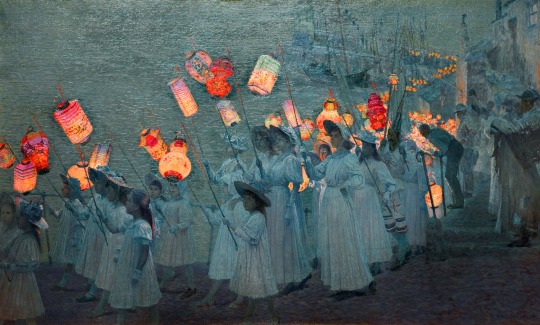
Jubilee Procession in a Cornish Village, June 1897 (Queen Victoria's Diamond Jubilee) by George Sherwood Hunter (Scottish, 1846--1919)
5K notes
·
View notes
Photo

Popular Science Monthly, June 1919
837 notes
·
View notes
Photo

Julius Leblanc Stewart (1855-1919) - The unfulfilled wish
Oil on canvas. Painted in 1899.
53.4 x 29.6 inches, 135.6 x 75.2 cm. Estimate: US$25,000-40,000.
Sold Freeman’s, Philadelphia, 4 June 2023 for US$81,900 incl B.P.
719 notes
·
View notes
Text

Virginia Woolf in a letter to Vanessa Bell, 18 June 1919, from “The Letters of Virginia Woolf Volume II: 1912-1922.”
#Virginia Woolf#The Letters of Virginia Woolf Volume II: 1912-1922#Correspondance#Quotes#Poetry#Lit#W#English Literature
167 notes
·
View notes
Text
LGBT literature of the 1860s–1910s. Part 5
After a long pause, the list is back! Here we have a couple of plays, accounts by two trans women, lesbian poetry, and more.
1. Despised and Rejected, by A.T. Fitzroy (Rose Allatini; 1918). A pacifist novel published during World War One? With gay and lesbian characters? Yes, that was sure to get people in trouble. Its publisher was fined and the judge called it “morally unhealthy and most pernicious”. So, Dennis is a young composer who hates violence and therefore refuses to go to war. He also suffers because he is a “musical man”, that is, gay, and loves Alan, art-loving son of a wealthy businessman. His friend Antoinette, meanwhile, is “strangely attracted” to a woman. Nevertheless, the two attempt to love each other. When the war begins, Alan appears in Dennis’ life again, and they try to avoid being sent to the front together. Alan also persuades Dennis to accept who he is. Edward Carpenter himself defended the novel, saying that “the book is also a plea for toleration of a very much misunderstood section of humanity”.
Read online
2. Autobiography of an Androgyne, by Ralph Werther (1918). Ralph Werther, also known as Jennie June, wrote this autobiography for doctors, and it is very revealing. Being a New York fairy (male prostitute) and possibly a trans woman, they tell frankly about the city’s gay underworld of the early 20th century and their personal experience, which is sometimes too frank and dark perhaps, but all the more interesting.
Read online
3. Poems by Mikhail Kuzmin. Kuzmin was not just the author of Russia’s first gay novel, but also a poet. Many of his works were dedicated to or mentioned his lovers. I’d recommend Where Will I Find Words (in English and Russian), Night Was Done (both in English and Russian), from the 1906-1907 collection Love of This Summer (available fully in Russian), mostly based on his love affair with Pavel Maslov in 1906. And also If They Say (in English and Russian), which is a great statement.
4. The Loom of Youth, by Alec Waugh (1917). A semi-biographical novel based on Evelyn Waugh’s older brother’s experience at Sherborne School in Dorset. It is a story of Gordon Caruthers’ school years, from the age of 13 to 19, and it is full of different stories typical for public schools, be it pranks and cheating exams or dorm life and sports. Although the homosexual subject was quite understated, the author implied that it was a tradition and open secret in public schools. The book became popular and soon caused a great scandal. Worth noting that before that Alec was expelled for flirting with a boy.
Read online
5. Two Speak Together, by Amy Lowell (1919). Lowell was a famous American poet and lesbian. Many of her poems were dedicated to her lover, actress Ada Dwyer Russell, specifically the section Two Speak Together from Pictures of the Floating World. These poems are infused with flower imagery, which wasn’t uncommon for lesbian poetry of the time.
Read online
6. De berg van licht/The Mountain of Light, by Louis Couperus (1905-1906). Couperus is called the Dutch Oscar Wilde for a reason: this is one of the first decadent novels in Dutch literature. It is also a historical one, telling about a young androgynous Syrian priest Heliogabalus who then becomes a Roman Emperor. Homoerotism, hedonism, aestheticism: Couperus creates a very vivid world of Ancient Rome. He also covered the topic of androgyny in his novel Noodlot, which was mentioned in Part 3 of this list.
Read online in Dutch
7. Frühlings Erwachen/Spring Awakening/The Awakening of Spring, by Frank Wedekind (1891, first performed in 1906). This play criticized the sexually oppressive culture prevalent in Europe at the time through a collection of monologues and short scenes about several troubled teens. Each one of them struggles with their puberty, which often leads to a tragic end. Like in The Loom of Youth, homosexuality is not the central focus of the play, but one character, Hänschen, is homosexual and explores his sexuality through Shakespear and paintings. The play was later turned into a famous musical.
Read online in German or in English
8. Twixt Earth and Stars, by Radclyffe Hall (1906). Though it wasn’t known to many at the time, these poems were dedicated to women, some to Hall’s actual lovers.
Read online
9. The Secret Confessions of a Parisian: The Countess, 1850-1871, by Arthur Berloget (published in 1895). This account is similar to the Autobiography of an Androgyne, albeit shorter. The author nowadays is thought to be a trans woman. They describe their love for women’s dresses, the euphoria from wearing dresses, makeup and wigs, the life as a “female impersonator” in Parisian cafe-concerts, and their love affair with a fellow prisoner. The autobiography is not available online, but you can read it in Queer Lives: Men’s Autobiographies from Nineteenth-Century France by William Peniston and Nancy Erber.
10. At Saint Judas’s, by Henry Blake Fuller (1896). This is possibly the first American play about homosexuality. It is very short. An excited groom is waiting for his wedding ceremony in the company of his gloomy best man. They are former lovers, and this short scene is not going to end well…
Read online
Previous part is here
#lgbt literature#lgbt fiction#queer history#queer fiction#lesbian literature#russian literature#gay literature#gay history#spring awakening#lesbian history#blog: history#blog: literature
273 notes
·
View notes
Text

— June 27, 1919 / Franz Kafka diaries
108 notes
·
View notes
Text
Застывшие во времени люди и боги итальянского скульптора Арриго Минерби Феррары.
People and gods frozen in time by Italian sculptor Arrigo Minerbi Ferrara.




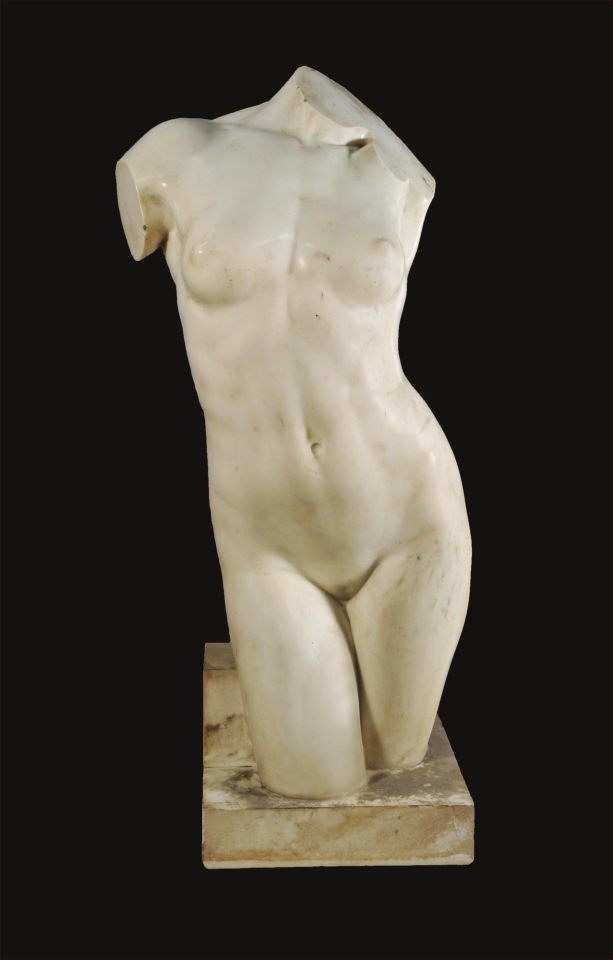
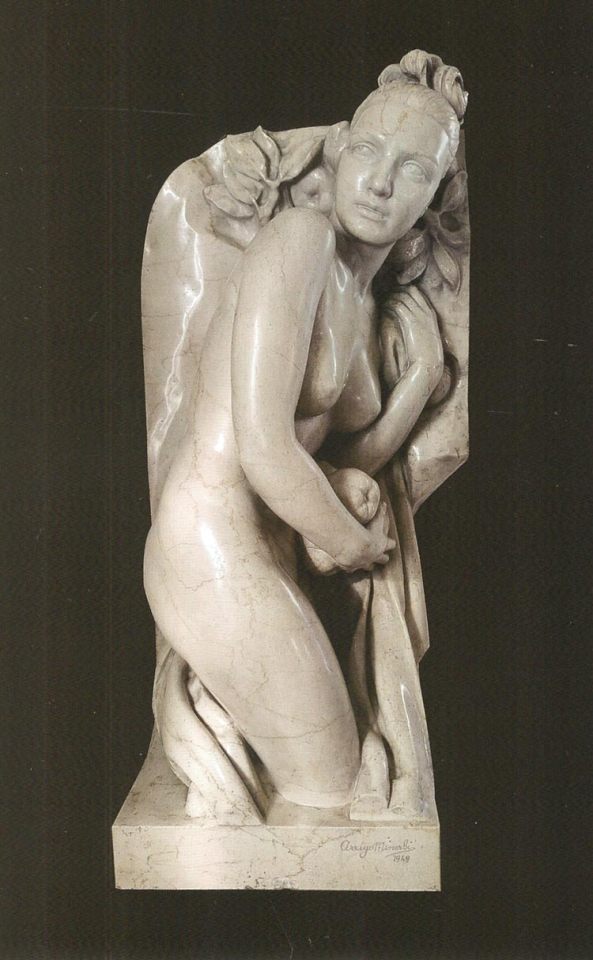







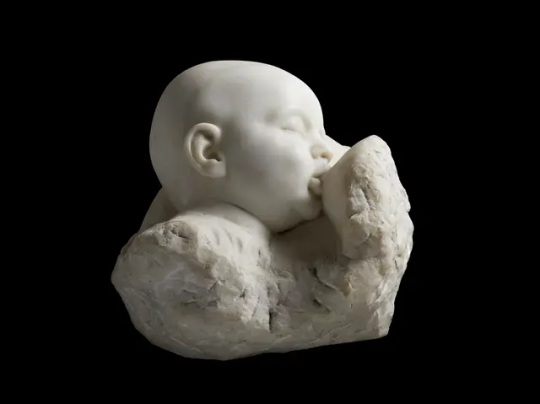
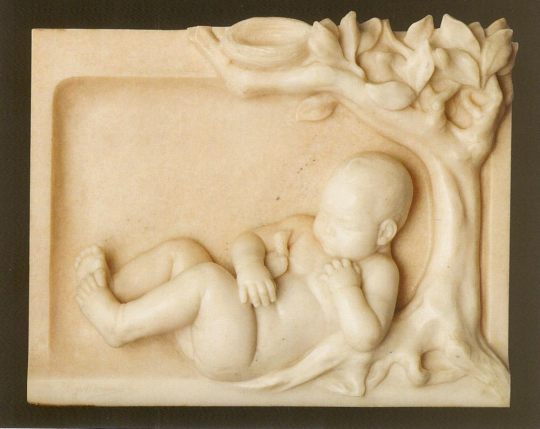
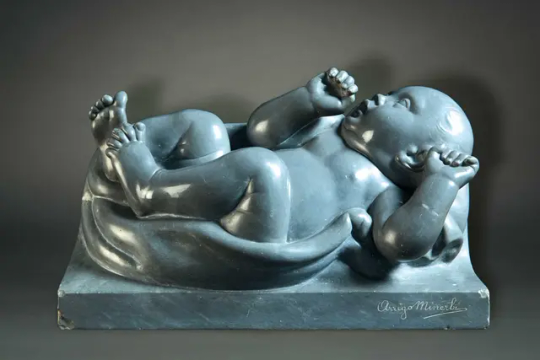
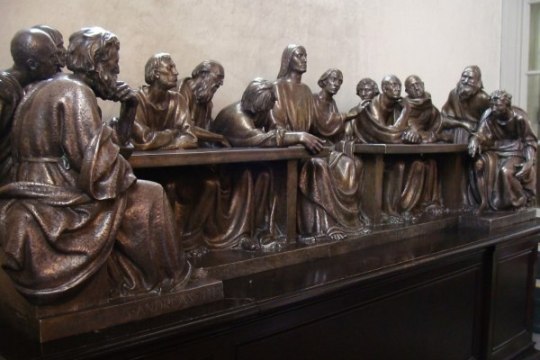
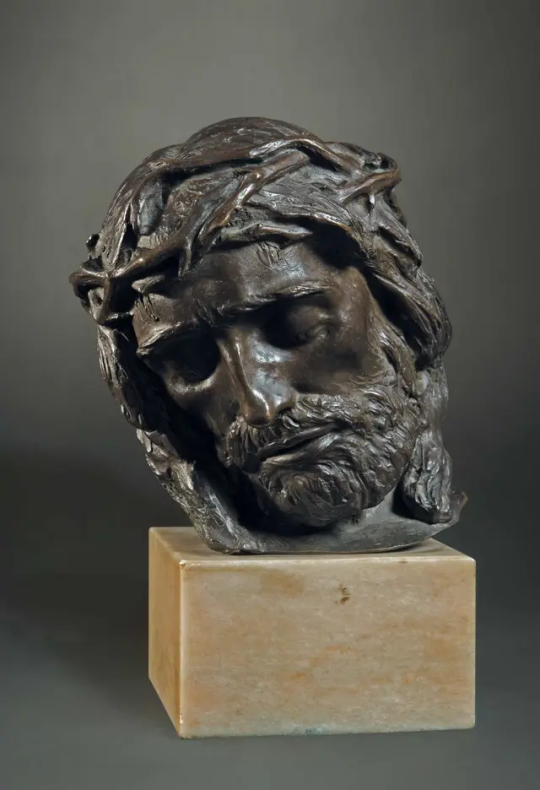
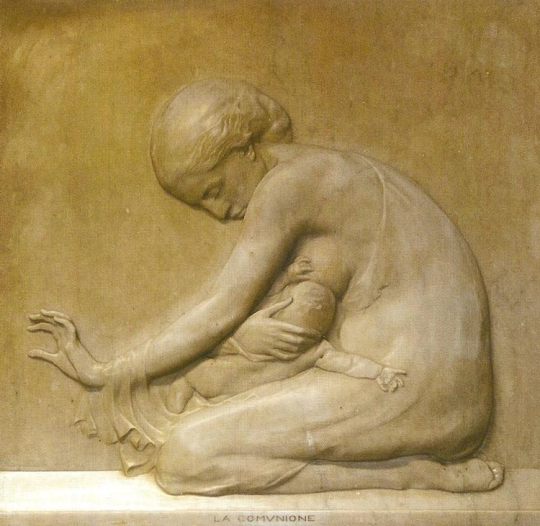

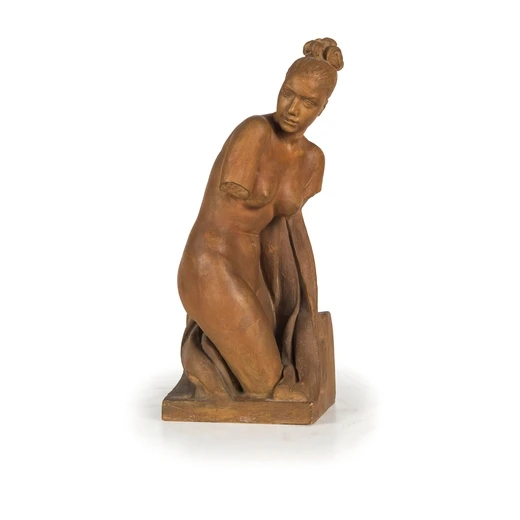

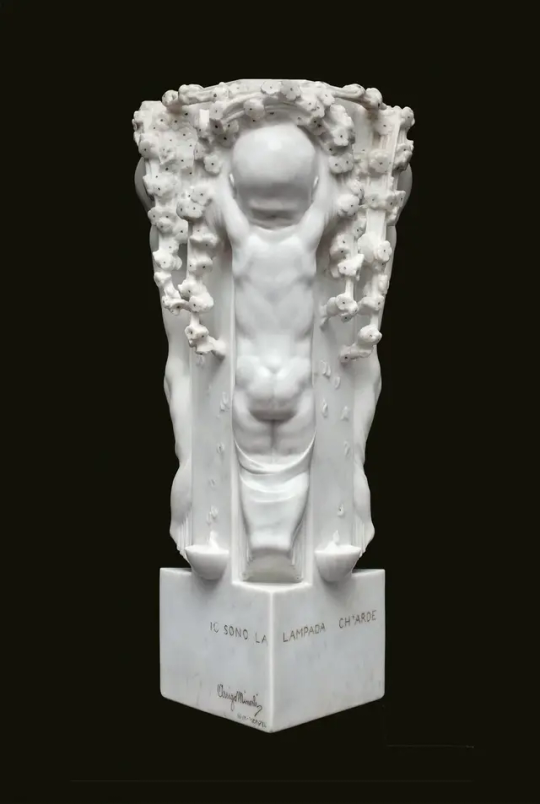


Арриго Минерби ( 10 февраля 1881 , Феррара — 9 мая 1960 , Падуя ) — итальянский скульптор . Родился 10 февраля 1881 года в еврейской семье в Ферраре , под руководством скульптора Луиджи Леньяни посещал курсы декоративно-прикладного искусства в Ферраре в школе Доссо Досси . Он работал керамистом, декоратором, тренером и штукатуром в Ферраре, во Флоренции (где он совершенствовал свое мастерство в Академии изящных искусств ) и в Генуе (из этого периода следует помнить гигантского Нептуна из железа и бетона 1910 года в Монтероссо ).
В возрасте 35 лет он переехал в Милан , где в 1919 году устроил для критиков и публики выставку своих работ в галерее Пезаро. Эта выставка также успешно гастролировала до 1920 года. Regionale di Ferrara, возвращение в Милан в 1922 году перед поездкой на Primaverile Fiorentina, и, наконец, его пригласили на Венецианскую биеннале , где он выставил свою серебряную группу «Тайная вечеря» (сейчас в Соборе Осло ). 14 июня 1925 года в Парко делле Римембранзе на Бондено он представил свой «Мадре» как памятник погибшим в Первой мировой войне. Он стал почетным гражданином Бондено, хотя это было отменено из-за фашистских расовых законов и повторно присвоено только в 2004 году. После Второй мировой войны Минерби работал в основном для католических церквей и кладбищ (в Милане, Риме, Рапалло , Пьяченце , Падуе , Коппаро).
Arrigo Minerbi (February 10, 1881, Ferrara - May 9, 1960, Padua) was an Italian sculptor. Born on 10 February 1881 into a Jewish family in Ferrara, under the guidance of the sculptor Luigi Legnani he attended arts and crafts courses in Ferrara at the Dosso Dossi school. He worked as a ceramist, decorator, trainer and plasterer in Ferrara, in Florence (where he perfected his skills at the Academy of Fine Arts) and in Genoa (from this period the giant iron and concrete Neptune of 1910 in Monterosso should be remembered).
At the age of 35, he moved to Milan, where in 1919 he staged an exhibition of his work for critics and the public at the Pesaro Gallery. This exhibition also toured successfully until 1920. Regionale di Ferrara, returning to Milan in 1922 before traveling to the Primaverile Fiorentina, and finally being invited to the Venice Biennale, where he exhibited his silver group The Last Supper (now in Oslo Cathedral). On 14 June 1925, in the Parco delle Rimembranze in Bondeno, he presented his Madre as a monument to those killed in the First World War. He became an honorary citizen of Bondeno, although this was revoked due to fascist racial laws and was only re-granted in 2004. After World War II, Minerbi worked mainly for Catholic churches and cemeteries (in Milan, Rome, Rapallo, Piacenza, Padua, Copparo).
Источник: :wiki5.ru,https://www.artearti.net/mostre/arrigo-minerbi-ritorno-alla-gloria, /it.wikipedia.org/wiki/Arrigo_Minerbi, /vk.com/@bmpage-gigantskaya-statuya-neptuna-v-nebolshom-italyanskom-gorode, //www.artearti.net/mostre/arrigo-minerbi-ritorno-alla-gloria, /www.flickr.com/photos/pivari/21549242499, /www.finestresullarte.info/en/exhibition-reviews/arrigo-minerbi-sculptor-between-ferrara-and-the-italian-culture-of-the-early-twentieth-century.
#искусство#Италия#скульптор#Арриго Минерби#скульптура#Нептун#Тайная вечеря#Мадре#Italia#sculptor#Arrigo Minerbi#sculpture#statue#neptun#The Last Supper#Madre
103 notes
·
View notes
Text
More random details from the depths of RE8
With the excuse of trying some shiny new mods, I've been replaying RE8 lately for the umpteenth time. Given the number of hours I've already poured into this game, you'd really think there'd be nothing left to find by this stage ‒ yet here I am, finding still more details I'd somehow missed the first half-dozen times through.
For one, there's the fact you can actually find Eva's grave in the graveyard outside the church. As the only photo we ever see of her shows her as a baby, I'd assumed she was still a baby when she died, but turns out, she was ten years old.
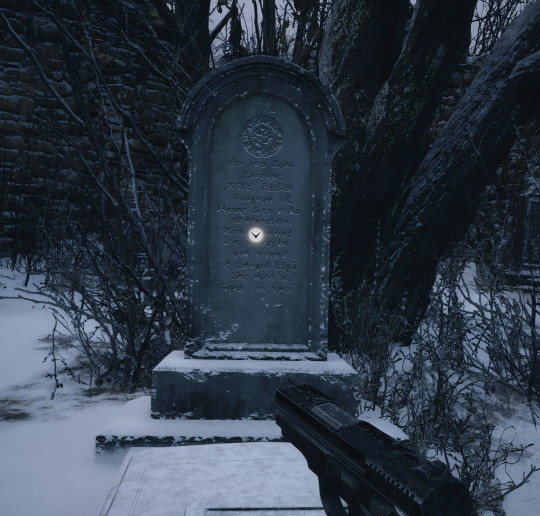
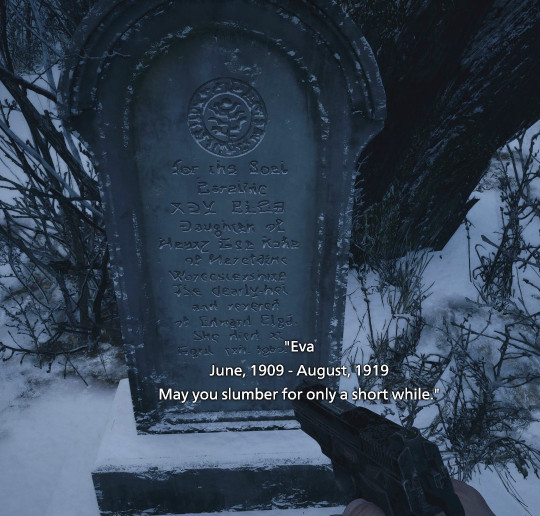
"Eva, June 1909 ‒ August 1919
May you slumber for only a short while"
As expected, her death of the Spanish flu took place in 1919. There's some semi-legible text on the stone, but it doesn't match the caption ‒ it's just the same generic filler text you'll find on half the gravestone assets in this game.

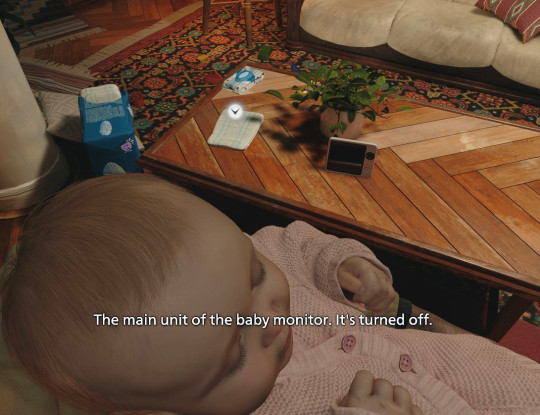
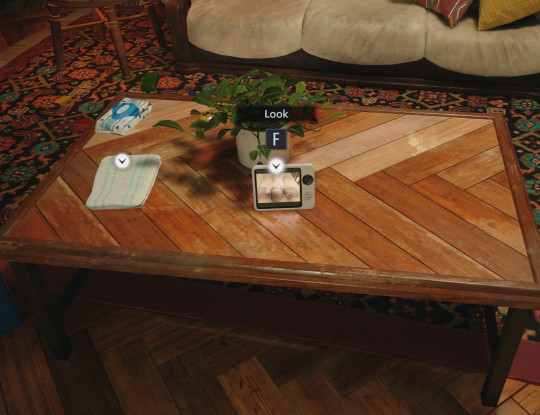
For another, there's Rose's baby monitor. I'd noticed Ethan turning the thing on when he puts her to bed, and even found the assets for its screen ‒ but since I'd never found the monitor itself, I assumed they must be unused.
Until this playthrough, when suddenly I'm just like, oh, there it is, sitting right on the table. You can even interact with it!
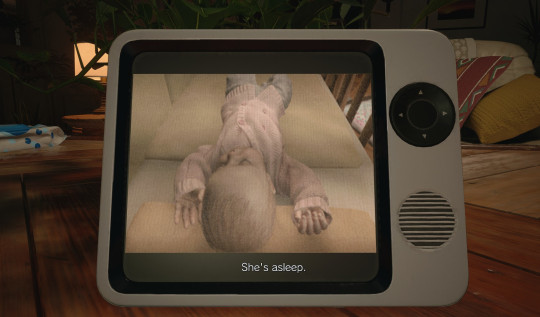
How did I miss this so many times? It is pretty easy to overlook, given you'll trigger the cutscene with Mia if you go much closer to the kitchen, but I'm still surprised I never spotted it before. (And you do have to wonder if there was ever any plan for it to show a glimpse of something more sinister than just a still-image of Rose sleeping.)
In other minor details, there's the bit where Ethan arrives on the outskirts of the village at 8AM. You can hear a clock striking 8 times as you get your first view of area.
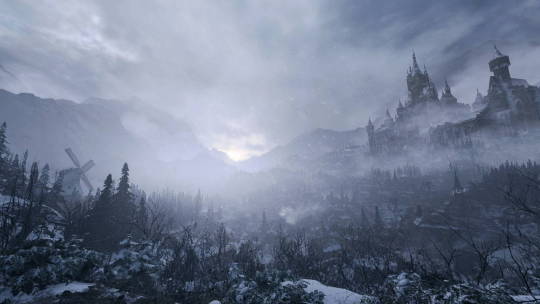
Granted, this is not going to excite anyone who hasn't spent as long as I have putting together an hour-by-hour timeline of everything that happens in this game, but I still do love that they give you enough detail that that's even possible ‒ and this new timestamp fits right into that timeline. (And why yes I have just gone back and updated that post, what do you take me for?)

Speaking of assets I thought were unused, you know that hidden room under the castle you can't get into until later, where you have to solve a puzzle that involves setting a moroaica on fire? Have you ever looked closely at the tapestries decorating this place? Because I found them in the game files ages ago, and have been trying to figure out if they're actually in the game ever since.
Because seriously, look at these things!

Yes, that is a indeed a man with a sword and spear, wearing a hoplite helmet and sandals and nothing else. And the women seeing him from the front seem to be having a whole range of reactions to all that, er, weaponry being brandished their way. Isn't fine art wonderful?
Another asset I'd innocently assumed was unused is this wonderful bit of bullshit which was labeled simply 'antibow'. It wasn't until I took a long look at it that I realised what they meant was more like 'anti-B.O.W.', as in Bio-Organic-Weapon.
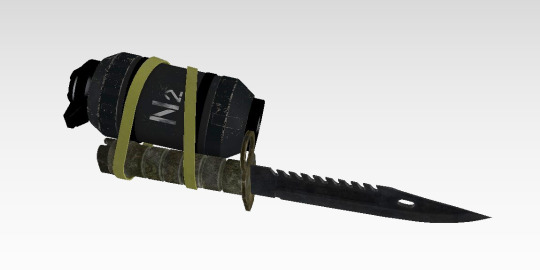
Yes, that is indeed a knife taped to some kind of grenade. Sure is one high-tech outfit we're working with here!

Only now do I spot that this is actually the bomb Chris chucks at the Megamycete in the cavern. It doesn't even come with the knife already attached, he just kind of sticks the knife onto the bomb and presumably straps some tape around them while the camera cuts away.
I still have so much more to share from my ongoing free-camera adventures, but I think we'll leave this one there for today.
#Resident Evil Village#Rosemary Winters#Ethan Winters#Eva#Mother Miranda#Chris Redfield#RE assets#RE lore#Resident Evil#ununsed assets
138 notes
·
View notes
Text
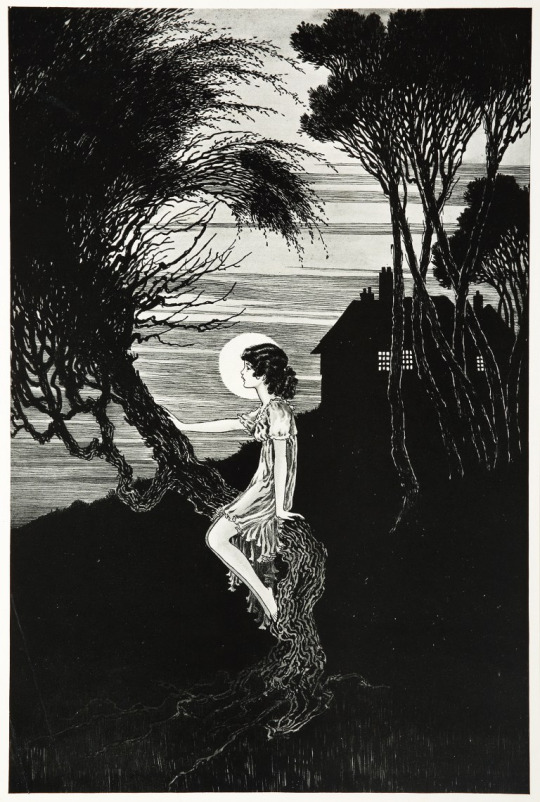
Ida Rentoul Outhwaite (Australian, 9 June 1888 – 25 June 1960)
Moonrise, ca. 1919
185 notes
·
View notes
Text

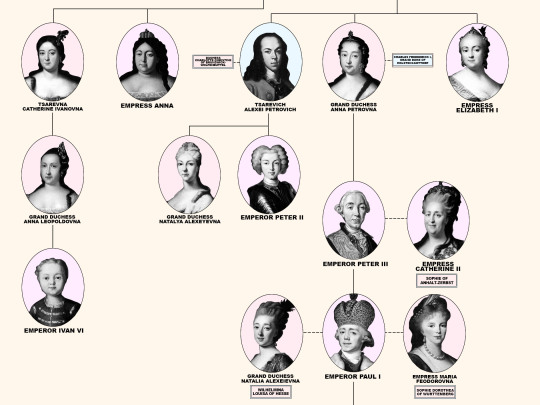
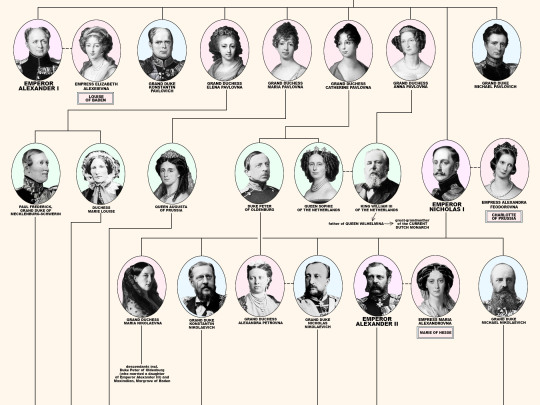
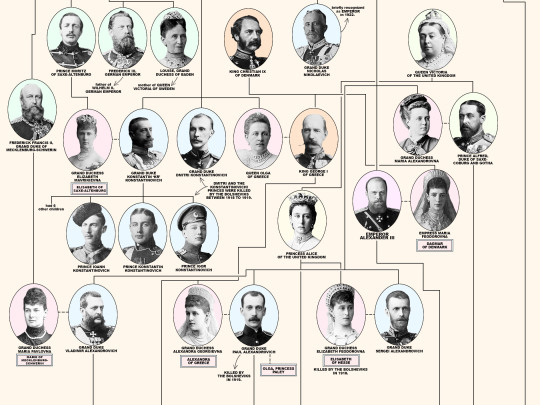

Members of the House of Romanov, the last reigning Dynasty of Russia.
From the first Romanov Russian Tsar Michael I (reigned 1613-1645) until the last Emperor Nicholas II (reigned 1894-1917). Including the 18 members of the house executed from 1918 until 1919; Grand Duke Michael Alexandrovich (13 June 1918). Nicholas II, Empress Alexandra Feodorovna, Grand Duchesses Olga Nikolaevna, Tatiana Nikolaevna, Maria Nikolaevna, Anastasia Nikolaevna, and Tsarevich Alexei Nikolaevich (17 July 1918). Grand Duchess Elizabeth Feodorovna, Grand Duke Sergei Mikhailovich, Prince Ioann Konstantinovich, Prince Konstantin Konstantinovich, Prince Igor Konstantinovich, and Prince Vladimir Paley (18 July 1918). Grand Duke Paul Alexandrovich, Grand Duke Dmitri Konstantinovich, Grand Duke Nicholas Mikhailovich, and Grand Duke George Mikhailovich (28 January 1919).
#romanovs#history#nicholas ii#alexandra feodorovna#olga nikolaevna#tatiana nikolaevna#maria nikolaevna#anastasia nikolaevna#alexei nikolaevich#myedits#peter i#peter ii#Peter iii#peter iii#Catherine the great#tsar alexei i#tsar michael#tsar paul i#alexander i#alexander ii#alexander iii#nicholas i#ancestry
349 notes
·
View notes